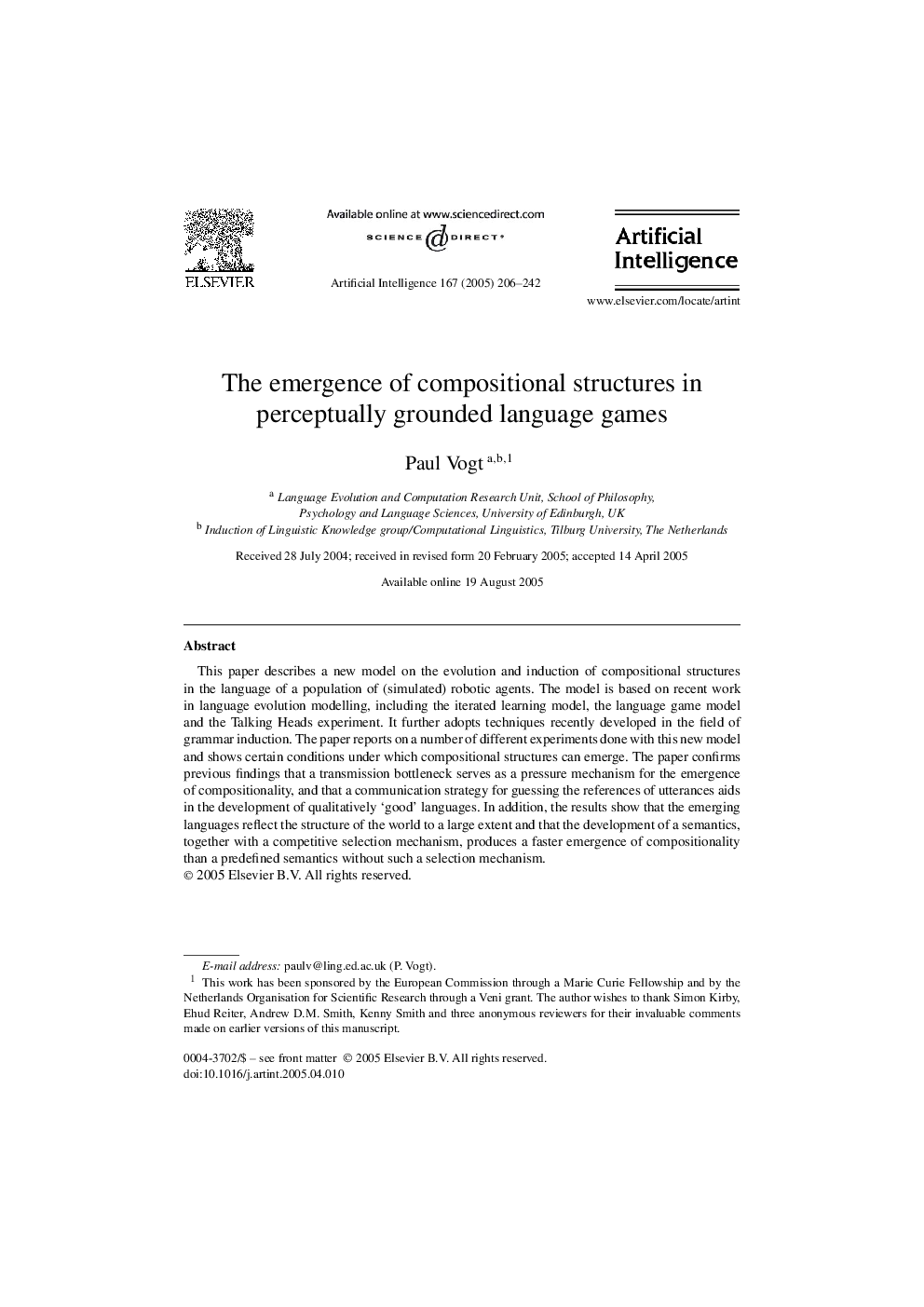| Article ID | Journal | Published Year | Pages | File Type |
|---|---|---|---|---|
| 9650006 | Artificial Intelligence | 2005 | 37 Pages |
Abstract
This paper describes a new model on the evolution and induction of compositional structures in the language of a population of (simulated) robotic agents. The model is based on recent work in language evolution modelling, including the iterated learning model, the language game model and the Talking Heads experiment. It further adopts techniques recently developed in the field of grammar induction. The paper reports on a number of different experiments done with this new model and shows certain conditions under which compositional structures can emerge. The paper confirms previous findings that a transmission bottleneck serves as a pressure mechanism for the emergence of compositionality, and that a communication strategy for guessing the references of utterances aids in the development of qualitatively 'good' languages. In addition, the results show that the emerging languages reflect the structure of the world to a large extent and that the development of a semantics, together with a competitive selection mechanism, produces a faster emergence of compositionality than a predefined semantics without such a selection mechanism.
Keywords
Related Topics
Physical Sciences and Engineering
Computer Science
Artificial Intelligence
Authors
Paul Vogt,
